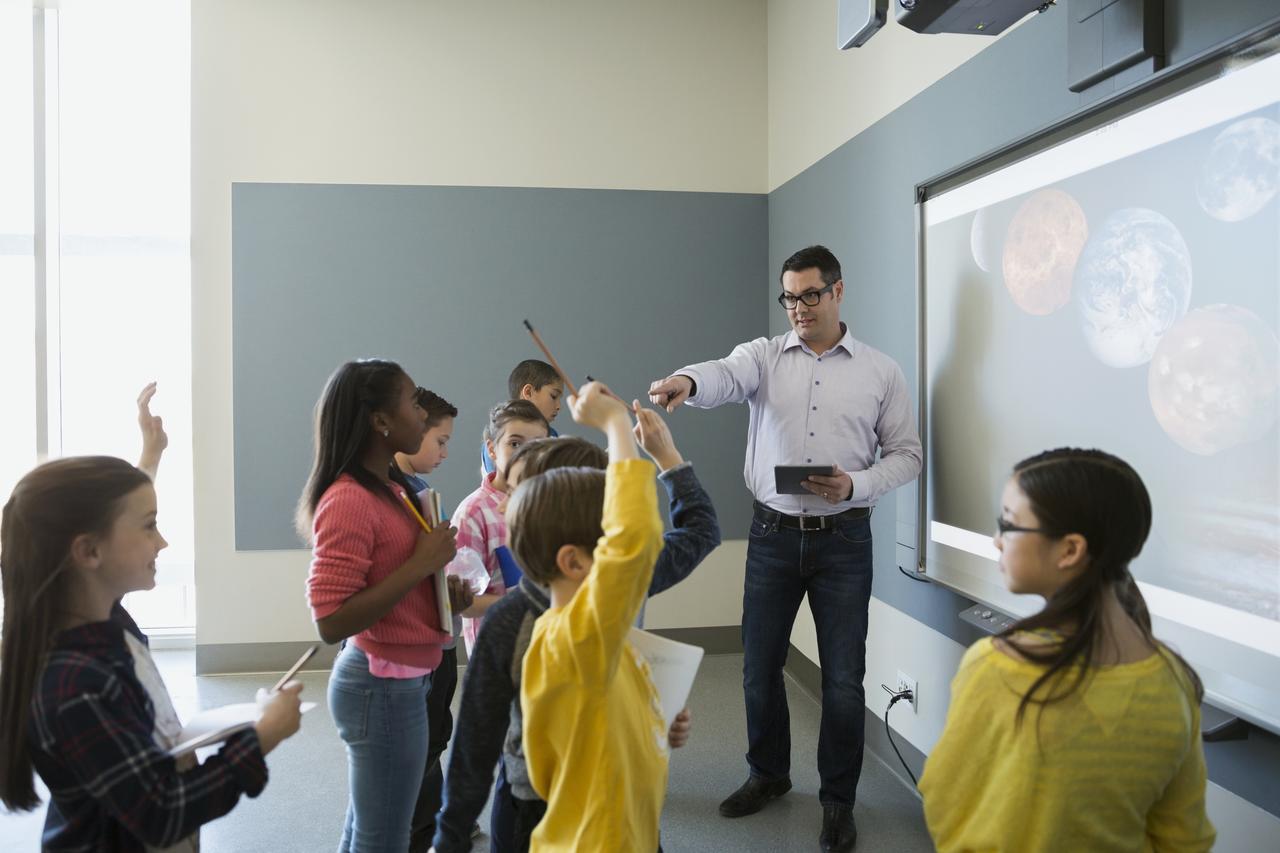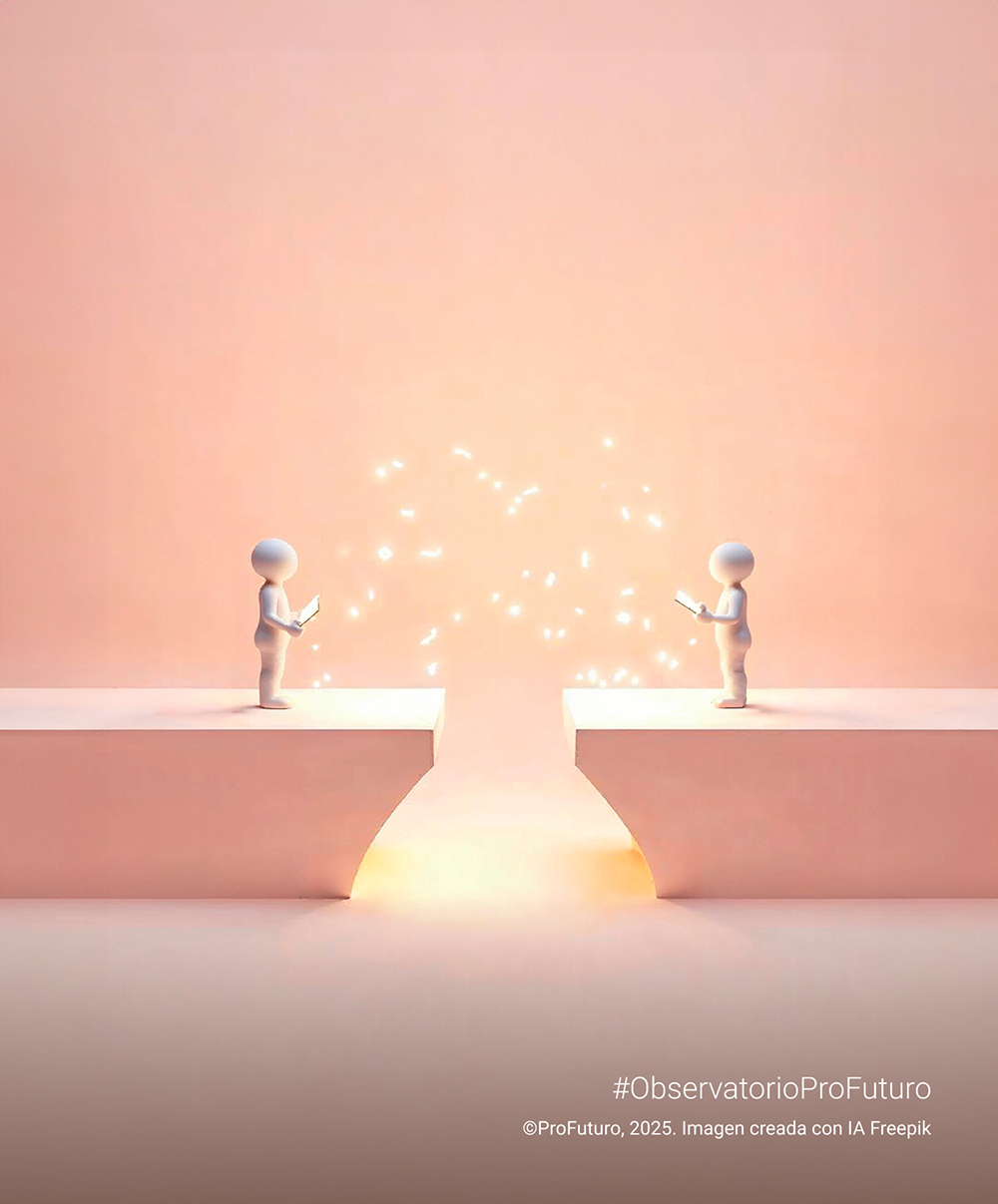Turning education around: flipped learning
In 2006, two teachers arrived to teach chemistry in a Colorado, USA rural school. They soon realized that many of their students, who were involved in sports and extracurricular activities, were missing many classes when they went to other schools for such activities. In addition, they detected cases where students had difficulties in understanding concepts which, although meeting requirements to pass the subject, they were not learning what they had to learn. One day, one of these teachers read an article in a technology magazine that showed the possibility of recording a Power Point presentation, including voice and notes, and convert it into a video file for on-line distribution. This finding would avoid students from missing classes and, therefore, that day’s lessons. Thus, flipped learning was born (Bergmann and Sams, 2012).
Flipped learning is a pedagogical approach in which the so-called direct instruction (where the teacher “instructs” the student by providing a structured and necessary knowledge set for later learning) is transferred to the individual (e.g. instead of attending a face to face “master class” the student can watch a video at home). Thus, face-to-face and group classes time is used to develop meaningful and interactive learning activities, in which the teacher guides students as they apply concepts and engage creatively in the subject (through, for example, discussions, projects, labs…) (FLN, 2014).
The idea is for the student to be more active and participatory during classes, while being confronted with situations in which he or she must reflect on learning and create knowledge. For this, we transfer the more mechanical part of learning to their home and leave the more active part for school.
Not just video
Although video is one of the main resources used for flipped learning, other resources, digital or not, can also be used. For example, podcasts, videographies, readings, newspapers… The important thing is that this content be intentional and directed (Roman, 2020).
The four pillars of flipped learning
In order to apply this approach correctly, it is necessary consider some basic aspects, the pillars of flipped learning, formulated by some of its most prominent theorists. Which are these pillars? (FLN, 2014).
- Flexible environment. This pillar refers to the adaptability of the working environment, both physically (rearrangement of space and individual or student’s group work). And in terms of time, students can decide where and when to learn. Teachers must make their time more flexible, whatever necessary for this learning to take place.
- Learning culture. Unlike other models more teacher-centred, in flipped learning the student becomes the centre of the learning process and is very actively involved in knowledge construction, participating and evaluating the learning process in a way that is personally meaningful to him.
- Intentional content. The content of a flipped classroom should be well thought out. Always keep in mind how flipped learning can be used so that students learn what they need to learn, and in the way they need to. It is necessary to think about what needs to be taught and what materials should be explored by students autonomously. Teachers use the content to maximise class time and adopt active, student-centred learning methods, depending on education level and subject matter.
- Professional educator. The last pillar proposed refers to the fundamental and more demanding teacher’s role in a flipped classroom than in a traditional one, his role is changed to observe, guide and evaluate students’ work in real time, reflect on their practice, share and learn from other teachers or take on less visible roles within the classroom.
In this Telefónica Foundation guide you will find much more information about flip learning and its possibilities. Download.
I accept the challenge!

To make an energy saving plan for the school, plan and set up a company that sells fair trade products, organise a fund-raising event for refugees in your community… Challenge-based learning consists of working with students on a solution to real challenges that exist in our environment or society. Returning to Benjamin Franklin’s phrase: Involve me and I will learn.
This pedagogical approach actively involves the student in a real and environmentally relevant problem, involving the definition of a challenge and the implementation of a solution. It is a methodology very similar to Problem Based Learning, however, it differs in that in Challenge Based Learning we solve a real problem and not a problem specifically designed for the classroom.
The phases
When we talk about Challenge-Based Learning (CLL), we can distinguish the following phases (Mosquera, 2019):
- Choice of topic: a generic topic that can be investigated from different points of view is proposed, which is attractive to students and poses a social challenge. It could be climate change, energy saving, poverty or refugees.
- Brainstorming and question formulation. Once the subject has been chosen, a pooling session will be held where students will reflect on and formulate brainstorming questions to come up with a core question that should reflect their interest and possible social needs for their community’s improvement. This is where the challenge proposal will come from.
- Development of the challenge. Through questions, activities and resources, an attempt will be made to find the most appropriate solution to the problem. In this phase, ICTs play a very important role in research and information search.
- Context check. The chosen solution’s effectiveness will be tested in real environments.
- Work dissemination. Results will be shared and disseminated, e.g. through a video or blog posts.
- Self-assessment and learning through error will be a fundamental part of the work’s natural evolution. There will also be continuous evaluation by the teacher(s) involved, and external evaluations by other involved social agents in achieving the proposed goals, could also be included. Formal and informal assessment tools will be necessary.
Benefits of Challenge-Based Learning
The Observatory of Educational Innovation of the Tecnológico de Monterrey analysed this pedagogical approach in depth and established some of its most significant benefits for students (Observatory of Educational Innovation, 2020). Among these, the following are highlighted:
- Deep understanding: students gain a deeper understanding of subjects, learn to diagnose and define problems before proposing solutions, as well as develop their creativity.
- Commitment: students are involved in both the definition of the problem to be addressed and the solution developed to solve it.
- Learning, awareness and collaboration: students become aware of a given situation, develop research processes, manage to create models and to materialise them, they work collaboratively and in a multidisciplinary way.
- Community: Students get closer to their community’s reality, establish relationships with specialised people who contribute to their professional growth.
- Relevant and connected: students strengthen the connection between what they learn in school and what they perceive of their surrounding world.
- Communication skills: students tend to develop high-level communication skills, through social tools and media production techniques, to create and share self-developed solutions.
When school becomes life: Place-Based Learning
An old African proverb says that “It takes the whole tribe, to educate a child.” In this line, and closely related to Challenge-Based Learning, there is Place-Based Learning. This approach goes one step further by bringing learning into local contexts, adding the direct involvement of various local organisations and adopting an inter-cultural perspective, based on culture, history and customs. Students are more engaged because they know they are doing real work, teachers are revitalised by creating exciting learning opportunities and the school takes a more active role in the community.
For example, students can fulfil their academic goals by mapping their community’s green spaces or publishing about local traditional recipes. They immerse themselves in heritage, culture, landscape and local experiences while using these experiences for the language and mathematics studies, social studies, natural sciences and any other subject in their curriculum.
What can be achieved through this learning approach?
- Learning is personally relevant for the student.
- Learning experiences contribute to community vitality and environmental quality, and support the community’s role in promoting global environmental quality.
- Learning is supported by strong and varied partnerships with organisations, agencies, businesses and local governments.
- Learning is an interdisciplinary experience.
- Learning experiences are tailored to local audiences.
- Learning is based on and supported by the development of love for where one lives.
- It provides a basis for understanding and engaging adequately with regional and global issues.
- Place-based education programmes are a part of the achievement of other institutional objectives.
REFERENCES
Bergmann, J. and Sams, A. 2012. Flip your Classroom. Reach Every Student in Every Class Every Day. ISTE.
Flipped Learning Network (FLN). (2014) The Four Pillars of F-L-I-P™. Viewed on March 28th, 2022. Available at
Mosquera, I. (July, 2019). Challenge-based learning: Take the challenge! UNIR. The University on the Internet. Viewed on March 28th, 2022. Available at https://www.unir.net/educacion/revista/aprendizaje-basado-en-retos-acepta-el-desafio/
Promise of Place. (April, 2021) Principles of Placed-Based Education. Viewed on March 28th, 2022. Available at https://promiseofplace.org/what-is-pbe/principles-of-place-based-education
Román, R. (August, 2020). Inverted learning – An option for all. Institute for the Future of Education- Observatory. Monterrey Institute of Technology. Viewed on March 28th, 2022. Available at https://observatorio.tec.mx/edu-news/aprendizaje-invertido-una-opcion-para-todos
VV. AA. 2015. Challenge-based learning. Monterrey Institute of Technology. Edu Trends, Year 2, no. 6. Updated in June 2020.






